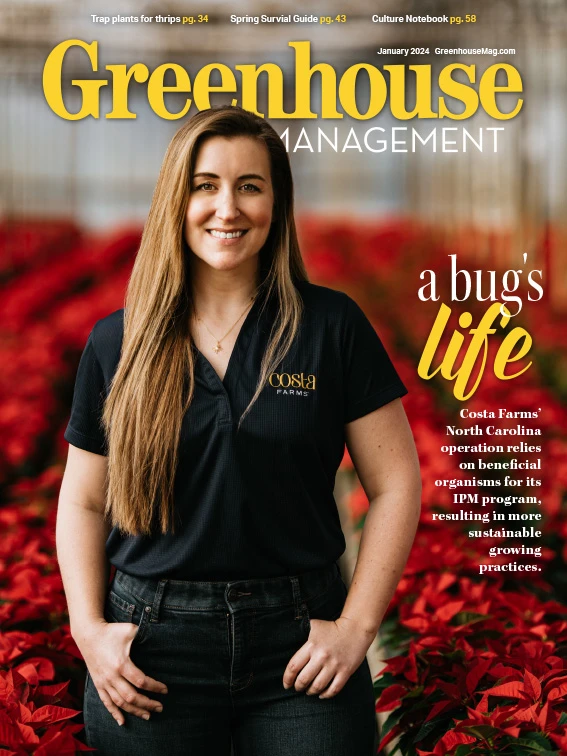
Amanda Milner, head grower at Washington state-based wholesale grower Skagit Horticulture, says the company hires between 80 and 100 seasonal laborers each spring. Those employees work across various departments, including shipping and transplanting.
According to Milner, Skagit looks to hire people they’ve worked with before and people new to the business. There are a significant number of employees who come back year after year, she says. But the labor pool and overall labor demands require Skagit to seek out new people each spring.
“We’re looking at both sides of it,” he says. “We rely a lot on past workers and have tried to keep good connections with them and let the outstanding performers know that even when the season ends, we enjoyed having them and when we think we might hire again so we can bring them back. That’s about 90% of the hiring we do.”
One team that has remained consistent year over year, Milner says, is Skagit’s watering team.
“Ninety percent of our water team comes back year after year,” she says. “These are people that started off training with us many years ago and we are going on around 10 years of having those same people come back now. ... It comes down to those individuals and their mindset. They are go-getters and they’ve got that attention to detail we really like to see. And it’s people that have done a great job of integrating with the rest of our staff.”

Training new faces
The key to bringing in new faces, Milner says, is training. During the winter months, she says Skagit dials in on who is going to lead different departments and gives them the tools they need to be effective teachers.
When new seasonal employees start, they are training in the area they are specifically assigned to so they can master their specific role.

“If there’s a worker we’ve brought on for watering help, then they are going to spend time with our section growers and understand what the right way to water the plants is and what expectations and standards are for each type of crop,” Milner says.
However, Milner says sometimes workers get moved around. For example, if someone brought in to work in shipping has a great eye for plants, they could get moved to a different team that better fits their skills while still addressing a need.
“If they have a great eye and feel for plants, maybe they should be over there helping the growing staff,” she says. “Maybe somebody that was hired for transplanting would be better off pulling plants for orders. We have to be flexible.”
HR’s role
In the hiring process, there’s also work to be done finding the right people in a pool of workers that might not all be plant people.
“We work closely with our HR team and rely on them a lot,” she says. “For different departments, we give them the base skills and experience we are looking for and they do that preliminary check on people for us. So if it’s bringing on someone to water, it could be as simple as asking them if they have a home garden. ‘Have you done this in some capacity before?’ is a question we ask, even if it’s not the same level we are operating at.”

Explore the January 2024 Issue
Check out more from this issue and find your next story to read.
Latest from Greenhouse Management
- Grant awarded to test western U.S. wood species for use as wood fiber potting substrate
- Pennsylvania Horticultural Society announces 2025 Gold Medal Plant winners
- Oasis Grower Solutions announces new Southeast territory sales manager
- How to reduce labor in greenhouse vegetable production
- A nation of gardeners: A history of the British horticulture industry
- Last Word with Angela Labrum, Bailey Nurseries
- Iowa plant supplier Plantpeddler building retail complex
- This month's Greenhouse Management magazine is about native plants and sustainability





